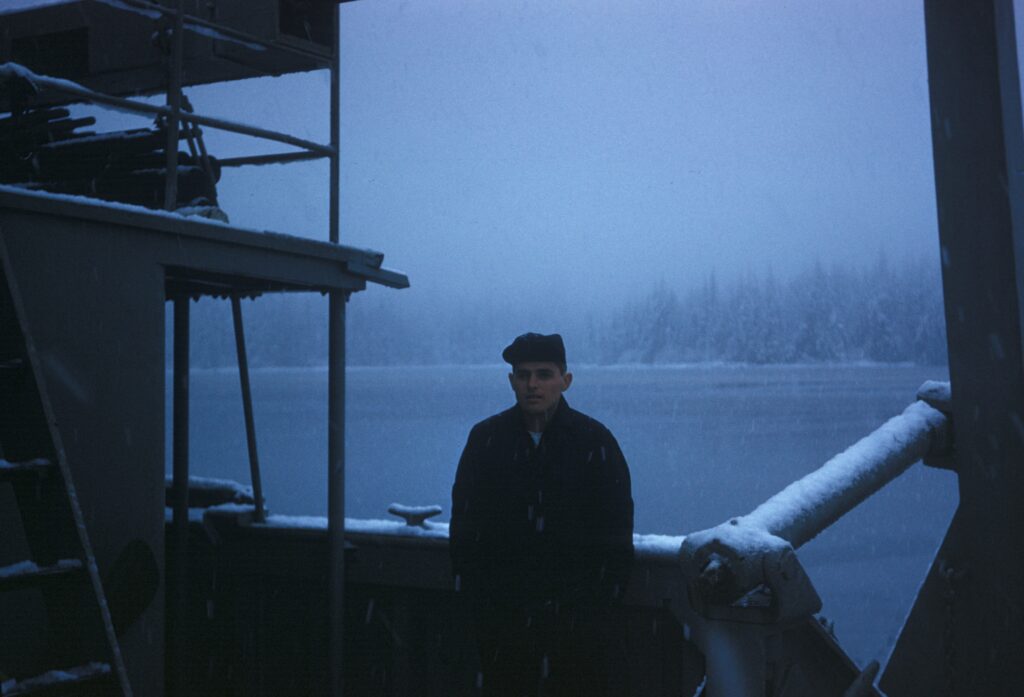How Does Afforestation Help The Environment: Introduction
Today, we’ll explore the fascinating topic of afforestation and its positive impact on the environment. As you delve into this article, you’ll discover the various ways in which afforestation benefits our planet. From mitigating climate change to promoting biodiversity and enhancing water resources, afforestation has become a powerful tool in addressing environmental challenges. So, grab a cup of tea, sit back, and let’s explore the question, “How Does Afforestation Help The Environment?” together!
How Does Afforestation Help The Environment: Increasing Forest Cover
Improving Air Quality
Afforestation, the process of planting trees in areas where there were no forests, plays a crucial role in improving air quality. Trees act as natural air filters, capturing pollutants such as carbon monoxide, sulfur dioxide, and nitrogen oxides from the atmosphere. Through the process of photosynthesis, trees absorb carbon dioxide, the primary greenhouse gas responsible for climate change, and release oxygen into the air. By increasing forest cover through afforestation, we can significantly reduce air pollution and create a cleaner and healthier environment for all.
Reducing Carbon Dioxide Levels
One of the key benefits of afforestation is its capacity to reduce carbon dioxide levels in the atmosphere. Trees act as natural carbon sinks, absorbing carbon dioxide during photosynthesis and storing it in their trunks, branches, leaves, and roots. This process, known as carbon sequestration, helps mitigate climate change by preventing the accumulation of greenhouse gases in the atmosphere. Afforestation initiatives have the potential to make a substantial impact in mitigating climate change and combating rising carbon dioxide levels.
Enhancing Biodiversity
Afforestation plays a vital role in enhancing biodiversity by creating new habitats and providing a refuge for a diverse range of plant and animal species. Forests are incredibly rich ecosystems, housing a plethora of flora and fauna. By planting trees in areas where there was previously no vegetation, we can restore and reconnect fragmented habitats, creating corridors that allow wildlife to move freely and ensure genetic diversity. Additionally, the presence of forests promotes the survival and growth of numerous species, contributing to the overall health and resilience of the ecosystem.
Preventing Soil Erosion
Trees play a crucial role in preventing soil erosion, particularly in areas with steep slopes or prone to heavy rainfall. The root systems of trees stabilize the soil, holding it together and preventing its detachment and transportation by wind or water. This prevents the loss of fertile topsoil and helps maintain soil quality, which is essential for sustaining agricultural productivity. Afforestation efforts in vulnerable areas can significantly mitigate the negative impacts of soil erosion, protecting farmland, and ensuring sustainable land use practices.
Fostering Water Conservation
Afforestation helps foster water conservation by influencing the water cycle and promoting better water management. Trees play a vital role in regulating water flow, as their canopies intercept rainfall and reduce the impact of heavy downpours, minimizing soil erosion and flash flooding. Additionally, forests act as natural sponges, absorbing water and storing it in the soil, which helps maintain groundwater levels and decreases the risk of droughts. Moreover, tree plantations near rivers and streams help filter water, reducing sedimentation and improving overall water quality. Afforestation initiatives contribute significantly to water conservation and sustainable water resource management.
Mitigating Climate Change
Carbon Sequestration
Afforestation is a powerful tool for mitigating climate change, primarily through carbon sequestration. By planting trees and increasing forest cover, we enhance the capacity of ecosystems to absorb carbon dioxide from the atmosphere. Trees store carbon in their biomass and in the soil, acting as long-term reservoirs for carbon capture. This not only helps combat rising carbon dioxide levels but also contributes to the overall reduction of greenhouse gas emissions, making afforestation a valuable strategy in the fight against climate change.
Regulating Water Cycle
The presence of forests and tree cover greatly influences the water cycle, contributing to climate regulation. Trees release water vapor through a process called transpiration, which increases humidity and influences cloud formation. This, in turn, can have a significant impact on local and regional precipitation patterns. Afforestation initiatives can help restore and maintain a healthy water cycle, ensuring adequate rainfall distribution and decreasing the risk of droughts or flooding. By regulating the water cycle, afforestation plays a crucial role in climate adaptation and resilience.
Alleviating Urban Heat Island Effect
Afforestation can help alleviate the urban heat island effect, a phenomenon where urban areas experience significantly higher temperatures compared to surrounding rural areas. Trees provide shade, reducing the direct exposure of surfaces to the sun’s heat and lowering ambient temperatures in urban environments. By strategically planting trees in cities and other built-up areas, we can create a natural cooling effect, improving the comfort of residents and reducing the energy demand for air conditioning. Afforestation contributes to the creation of more sustainable and livable urban environments.

Check Out Our Top Eco Friendly Product Picks On Amazon Here
How Does Afforestation Help The Environment: Protecting Wildlife Habitats
Providing Shelter
Afforestation plays a crucial role in protecting and providing shelter for a wide range of wildlife species. By creating new forests and expanding existing ones, we create habitats that can support the diverse needs of various animals. The forest canopy offers shelter and nesting sites for birds, while the understory provides hiding places for smaller mammals and reptiles. Trees also provide protection against extreme weather conditions and predators, allowing wildlife populations to thrive. Afforestation initiatives are essential in preserving wildlife habitats and ensuring a healthy ecosystem.
Offering Food Sources
Forests and tree cover provide a diverse range of food sources for wildlife, supporting their survival and contributing to the overall balance of ecosystems. Trees produce fruits, nuts, and seeds that serve as vital food resources for a variety of birds, mammals, and insects. Flowering trees also attract pollinators such as bees and butterflies, playing a crucial role in facilitating the reproduction of plant species. By planting trees through afforestation, we enhance food availability for wildlife and contribute to the preservation of biodiversity.
Creating Corridors
Afforestation projects can create corridors that connect fragmented habitats, allowing wildlife to move freely and maintain vital genetic diversity. Fragmentation caused by deforestation and human activities can isolate wildlife populations, leading to reduced genetic variability and increasing the risk of extinction. By strategically establishing forest corridors between fragmented areas, we enable animals to access different habitats, find mates, and disperse seeds. These corridors not only benefit wildlife but also promote a healthier and more robust ecosystem.
How Does Afforestation Help The Environment: Improving Soil Quality
Preventing Desertification
Afforestation plays a critical role in preventing and combating desertification, the process by which fertile land becomes increasingly arid and devoid of vegetation. By planting trees in arid and semi-arid regions, we help stabilize the soil, reducing wind and water erosion. The presence of trees provides shade, reducing soil temperature and evaporation rates, which helps retain moisture. Additionally, fallen leaves and organic matter from trees contribute to soil fertility and enhance water retention. Afforestation is a key strategy in combating desertification and preserving the productivity of land.
Enhancing Nutrient Retention
Trees and forests contribute to enhancing nutrient retention in the soil, promoting overall soil health and fertility. The leaf litter and organic matter produced by trees decompose over time, releasing essential nutrients such as nitrogen, phosphorus, and potassium into the soil. These nutrients are then available for uptake by plants, supporting their growth and productivity. Afforestation efforts contribute to the enrichment of soil nutrients, improving agricultural productivity and sustaining ecosystems.
Increasing Soil Fertility
Afforestation initiatives have a positive impact on soil fertility by improving soil structure and nutrient cycling. The root systems of trees help bind soil particles together, preventing erosion and improving soil structure. This leads to increased water infiltration, reduced surface runoff, and improved moisture retention in the soil. The leaf litter and organic matter produced by trees also contribute to soil organic carbon, which supports microbial activity and increases nutrient availability. By increasing soil fertility, afforestation projects promote sustainable agriculture and land use practices.

Promoting Sustained Economy
Creating Job Opportunities
Afforestation initiatives create various job opportunities, particularly in rural and economically disadvantaged areas. Planting and maintaining trees require a skilled workforce, ranging from nursery workers and tree planters to tree caretakers and forest managers. Additionally, afforestation projects often involve community engagement and participation, fostering social cohesion and empowering local communities. By promoting sustainable forestry practices and investing in afforestation, we can create employment opportunities that contribute to the sustained growth of the economy.
Supporting Livelihoods
Afforestation plays a crucial role in supporting livelihoods, especially in communities that rely on forest resources for their economic well-being. Forests provide a wide range of products such as timber, non-timber forest products, and medicinal plants, which can be sustainably harvested and traded. By promoting responsible and sustainable forest management, afforestation initiatives ensure the long-term availability of these resources, supporting the livelihoods of local communities and indigenous populations.
Generating Economic Value
Afforestation projects generate economic value through various means, including ecosystem services and the sustainable use of forest resources. Forests provide invaluable ecosystem services such as carbon sequestration, water regulation, and soil conservation, which have economic implications. These services contribute to climate change mitigation, water resource management, and land productivity, benefiting multiple sectors such as agriculture, water supply, and tourism. Furthermore, sustainable and responsible forest management can generate revenue through timber production, forest-based industries, and ecotourism. Afforestation has the potential to generate significant economic value while ensuring the long-term sustainability of natural resources.
How Does Afforestation Help The Environment: Conserving Water Resources
Reducing Water Runoff
Afforestation plays a critical role in reducing water runoff and enhancing water resource management. When rain falls on forested areas, trees intercept a significant portion of the rainfall, reducing the intensity of surface runoff. This allows more water to infiltrate the soil and recharge groundwater reservoirs, increasing water availability for ecosystems and human use. Afforestation initiatives in watersheds and critical areas can significantly reduce water runoff, minimizing the risk of floods and improving water resource sustainability.
Maintaining Groundwater Levels
Forests and trees play a key role in maintaining groundwater levels, particularly in areas dependent on groundwater as a primary water source. Through the process of transpiration, trees release water vapor into the atmosphere, creating a natural cycle of evaporation and condensation. This process contributes to the replenishment of groundwater reservoirs and the sustainability of wells and aquifers. Afforestation efforts help enhance groundwater recharge rates, ensuring the availability of clean and reliable water sources for both humans and ecosystems.
Minimizing Flooding Risks
Afforestation projects can play a crucial role in minimizing the risk of flooding, particularly in flood-prone areas. Trees act as natural barriers, intercepting rainfall and reducing surface runoff, effectively decreasing the volume and intensity of floodwaters. The root systems of trees also help stabilize soil, reducing erosion and preventing sedimentation in rivers and streams. By strategically planting trees in flood-prone areas, we can mitigate the impacts of floods, protect infrastructure, and ensure the safety and well-being of communities.

Enabling Sustainable Wood Production
Supplying Timber for Construction
Afforestation enables sustainable wood production and supplies timber for various industries, including construction. As global demand for timber continues to rise, responsible forest management practices become even more crucial. Afforestation initiatives ensure the cultivation of trees specifically for timber production, allowing for sustainable harvesting and regrowth. This ensures the long-term availability of timber resources and reduces the pressure on natural forests, promoting sustainable construction practices and contributing to a more sustainable built environment.
Contributing to Renewable Energy
Trees and forests contribute to renewable energy production through the use of wood biomass for energy generation. Afforestation projects can focus on fast-growing tree species specifically cultivated for biomass production. These trees can be sustainably harvested and used as a renewable energy source, either through direct combustion or conversion into biofuels. By promoting afforestation for renewable energy purposes, we can reduce dependence on fossil fuels, decrease greenhouse gas emissions, and contribute to a more sustainable and cleaner energy future.
Supporting Paper and Pulp Industries
The cultivation of trees through afforestation supports the paper and pulp industries, playing a vital role in the sustainable production of paper and related products. By ensuring the availability of responsibly sourced timber, afforestation contributes to reducing the environmental impact associated with paper production. Sustainable forest management practices and afforestation initiatives help protect natural forests from excessive logging, supporting the long-term sustainability of the paper and pulp industries. Afforestation serves as an essential strategy to balance the demand for paper and wood products with the conservation of forest ecosystems.
Enhancing Ecotourism Opportunities
Attracting Nature Lovers
Afforestation initiatives contribute to enhancing ecotourism opportunities by creating beautiful natural landscapes that attract nature lovers from around the world. Forests provide a myriad of recreational activities such as hiking, birdwatching, and wildlife spotting, offering unique experiences in natural settings. By promoting afforestation and preserving natural habitats, we can create ecotourism destinations that celebrate biodiversity, educate visitors about conservation, and provide sustainable economic benefits to local communities.
Preserving Cultural Heritage
Afforestation projects not only contribute to environmental conservation but also help preserve cultural heritage associated with forests and their ecosystems. Forests often hold significant cultural, historical, and spiritual value for indigenous communities and local populations. By engaging with these communities and involving them in afforestation initiatives, we can ensure the preservation of cultural heritage while promoting sustainable land use practices. Afforestation projects provide opportunities for cultural exchange and the celebration of traditional knowledge, fostering mutual understanding and respect.
Boosting Local Economies
Afforestation initiatives have the potential to boost local economies by attracting tourists and generating revenue for local communities. Ecotourism associated with afforested areas can bring much-needed income to rural and economically disadvantaged regions, providing job opportunities and supporting local businesses. By investing in afforestation and sustainable tourism practices, we can create a virtuous cycle of economic growth and environmental conservation, ensuring the long-term prosperity of local economies and the preservation of natural landscapes.

Protecting Water Quality
Filtering Pollutants
Afforestation plays a crucial role in protecting water quality by filtering pollutants through the soil and vegetation. As rainfall infiltrates forested areas, it passes through layers of organic matter and root systems, effectively trapping and removing pollutants such as sediments, pesticides, and nutrients. This natural filtration process helps maintain the quality of water in rivers, streams, and aquifers, reducing the risk of contamination and ensuring a safe and reliable water supply for both humans and aquatic ecosystems. Afforestation initiatives are instrumental in protecting and improving water quality.
Preventing Water Contamination
By preventing soil erosion and reducing water runoff, afforestation initiatives help prevent water contamination from various sources. Fertile topsoil, when eroded, contains sediments, pesticides, fertilizers, and other contaminants that can be carried into water bodies. Afforestation projects mitigate the risk of soil erosion by stabilizing soil with tree root systems, reducing the transport of contaminants into water sources. By minimizing water contamination, afforestation contributes to the preservation of aquatic ecosystems and the overall health of our water resources.
Maintaining Healthy Aquatic Ecosystems
Afforestation efforts contribute to maintaining healthy aquatic ecosystems by ensuring the conservation of natural water sources and promoting biodiversity. Forest cover near rivers, lakes, and wetlands helps regulate water temperature and nutrient levels, providing optimal conditions for aquatic organisms. Trees and forests offer shade and cover, reducing water temperature fluctuations and providing critical habitat for fish, amphibians, and aquatic invertebrates. Afforestation initiatives support the conservation of healthy aquatic ecosystems, preserving biodiversity and contributing to the overall health of our planet.
Creating Green Spaces
Improving Urban Aesthetics
Afforestation plays a crucial role in improving urban aesthetics by creating green spaces that enhance the beauty and livability of cities. Trees and urban green spaces provide visual appeal, creating a sense of tranquility and natural beauty in the built environment. The presence of greenery and trees in urban areas softens the harshness of concrete and steel, improving the overall aesthetic value of public spaces. Afforestation initiatives in cities can transform urban landscapes, making them more inviting, visually appealing, and conducive to human well-being.
Providing Recreational Areas
Afforestation creates green spaces that provide recreational areas for residents and visitors to enjoy. Urban forests, parks, and tree-lined streets offer opportunities for outdoor activities such as picnicking, jogging, and leisurely walks. These recreational areas promote physical and mental well-being, providing spaces for relaxation, exercise, and social interaction. By investing in afforestation and urban green space development, we can create inclusive and accessible environments that foster a sense of community and contribute to a higher quality of life for urban dwellers.
Promoting Mental Well-being
Green spaces created through afforestation initiatives have a significant positive impact on mental well-being. Research has shown that spending time in nature and green environments can reduce stress, anxiety, and depression. The presence of trees and vegetation in urban areas helps create a soothing and calming atmosphere, allowing individuals to disconnect from the fast-paced urban life and find solace in natural surroundings. Afforestation projects offer an effective solution for promoting mental well-being and improving the overall quality of life in urban communities.
How Does Afforestation Help The Environment: In A Nutshell
In conclusion, afforestation plays a multifaceted and essential role in improving the environment and promoting sustainable development. By increasing forest cover, we can improve air quality, reduce carbon dioxide levels, protect wildlife habitats, enhance soil quality, promote a sustained economy, conserve water resources, enable sustainable wood production, enhance ecotourism opportunities, protect water quality, and create green spaces. Afforestation not only creates a healthier and more vibrant natural environment but also provides numerous economic, social, and cultural benefits that contribute to the well-being of humans and the planet as a whole.




